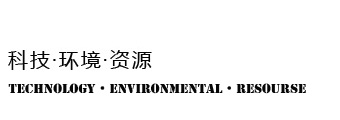How to recycle e-waste?
Statistics show that about 50 billion to 60 billion euros worth of products will be turned into waste in the annual purchase of electronic products by consumers around the world, and their total weight can reach 50 million tons, and it is still increasing significantly year by year. How to effectively dispose of these wastes, and preferably to generate some value from recycling, is one of the important issues facing the world’s scientific researchers.
Only less than ten elements can be recycled
Although countries have some legislation and channels to manage the recycling of e-waste, only 20% of them are qualified recycling processes. Furthermore, there are about 60 chemical elements in electronic waste, and only less than 10 are recycled, such as gold, silver, platinum, cobalt, tin, copper, iron, aluminum and lead, and all other components are buried in the landfill. underground.
Recycling e-waste is all about separating materials, molecules or chemical elements and selling them as raw materials to factories to recreate new products. This is achieved in several steps. The product must be disassembled, sorted, and crushed before the material separation process begins. They are usually burned first and then separated with chemical solvents.
The chemical separation stage is the most complicated, because the composition of electronic waste is not consistent, and the composition of any unit volume of waste varies so much that it is difficult to design a general chemical process for separation.
This is why the current recycling industry can only focus on isolating the most economically valuable ones, the metal materials listed above.
New recycling strategy
Newer strategies now generally do not use the incineration step, but use the processes of dismantling, sorting, grinding and dissolving.
The classification process is largely aimed at reducing the complexity of chemical compositions. Sorting can also be done on several levels, by type of device, by different components (circuit boards, batteries, casings, frames) and by sorting the powder after grinding.
The dismantling process cannot be automated at present, and is mainly done manually, so the cost is high, so it is difficult to dismantle to the extent that it can be carefully classified.
The current large-scale recycling companies, such as the well-known companies such as MTB, Paprec, and Veolia, can only classify the same equipment, or the same modules of the equipment, and then crush them, and then use the physical properties of powder density and magnetic properties. Classify again.
The powder is then further processed thermally or chemically. In this link, the most commonly used method is chemical solution separation, also known as liquid-liquid extraction technology. The process involves first dissolving the metal or its oxide with an acidic preparation, and then adding an organic solvent (such as an oil-like liquid) to form a liquid like an “oil and vinegar mixture.” Then separate them according to their different properties.
Of course, this process is difficult to perfect, and it usually takes dozens or even hundreds of repetitions to achieve the desired purity of the extract.
How to reduce the cost and efficiency of this process requires studying the influence of a large number of parameters on this process, including the aggregation degree of chemical components, acidity, temperature, etc., to find the most suitable balance.
Microfluidic extraction experimental equipment
The NTU-CEA Circular Economy Research Centre (SCARCE), a collaboration between Nanyang Technological University and French research institutions, is one of the largest projects in the field of recycling e-waste.
In order to save time and cost, they invented a miniature version of the microfluidic extraction device for the development of the extraction process. The pipes inside this device are less than 1mm in diameter, and the solutions and acids used are only a few microliters and milliliters, and the chemicals are only a few milligrams. Combining X-ray, infrared and various sensors, the effectiveness of the parameters used in the extraction process can be analyzed automatically and quickly.
This scaled-down version of the instrument reduces experiments that would have taken months to days.
Recycling Rare Earth Elements
Rare earth elements are mostly produced in China and are very expensive, and the current recovery rate is less than 5%.
The SCARCE research center began to develop the extraction of valuable metal elements from scrap mobile phones, and achieved great results:
● Using liquid-liquid extraction technology, the recovery efficiency of rare earth elements is a hundred times higher than the previous technology;
● The concentration of the acid solution used is 10-100 times lower than the current industrial use, and the pollution to the environment is small;
● also found a way to separate the different rare earth elements in several steps, the traditional method requires very complicated steps;
● Each link of these technologies is an independent unit, which means that it can be used independently for other purposes.








Leave a Comment